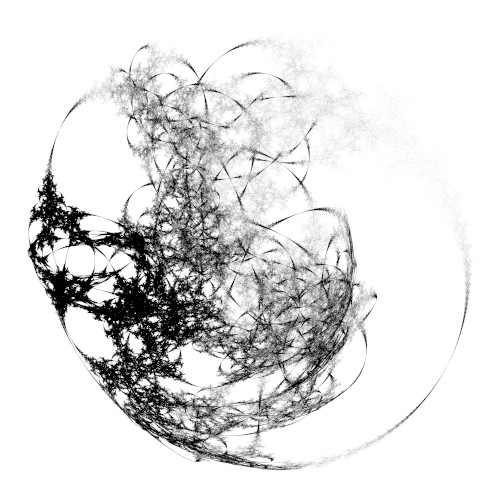Young meeting on Geometry and Dynamics
7, 8 and 9 december 2021
Conferencias
UNAL, Colombia
Parabolicity of zero-twist tight flute surfaces
A \emph{flute surface} is topologically equivalent to the infinite-type genus zero surface, whose ends space is homeomorphic to the ordinal number $\omega+1$. The tight flute surfaces are surfaces obtained by starting with a geodesic pair of pants $P_0$ with two punctures and one boundary geodesic and consecutively gluing geodesic pair of pants $P_n$ ($n\geq 1$) with one cusp and two boundary geodesics in an infinite chain. A tight flute surface is determined by its \emph{Fenchel-Nielsen parameters} $(\{l_n,t_n\})_{n\in\mathbb{N}}$ where $l_n$ and $t_n$ are the length and twist parameter of the boundary closed geodesic $\alpha_n$ of the surface obtained after gluing $n$ pair of pants. This surface is denoted by $S=S(\{l_{n},t_n\})_{n\in \mathbb{N}}$. If $t_n=0$ for all $n\in \mathbb{N}$, then we say that $S=S(\{l_{n},0\})_{n\in\mathbb{N}}$ is a \emph{zero-twist flute surface}. \vspace{3mm} An open Riemann surface $S$ is said to be \emph{parabolic}, if S does not carry a negative non-constant subharmonic function. If the Riemann surface $S$ is the quotient of the Poincar\'e unit disk $\Delta$ by a Fuchsian group $\Gamma$, then $S=\Delta/\Gamma$ is parabolic if and only if it satisfies one of the following conditions: \begin{itemize} \item[$\bullet$] The series $\sum\limits_{\gamma\in \Gamma}\left(\frac{1-\Vert \gamma(\textbf{0})\Vert}{1+\Vert \gamma(\textbf{0})\Vert}\right)$ diverges; \item[$\bullet$] The geodesic flow on the unit tangent bundle of $S$ is ergodic; \item[$\bullet$] The Mostow rigidity holds for $\Gamma$; \item[$\bullet$] The group $\Gamma$ has the Bowen's property. \end{itemize} \vspace{3mm} In this talk, we will associate to each zero-twist tight flute surface a sequence of positive real numbers. Conversely, we will associate to each sequence of positive real numbers $\mathbf{x}=(x_{n})_{n\in\mathbb{N}_{0}}$ a torsion-free Fuchsian group $\Gamma_{\mathbf{x}}$ such that the quotient $\mathbb{H}^2/\Gamma_{\mathbf{x}}$ is a zero-twist tight flute surface $S_{\mathbf{x}}$. Moreover, we will prove that the Fuchsian group $\Gamma_{\mathbf{x}}$ is of the first kind if and only if the series $\sum x_{n}$ diverges. As consequence of the recent work of A. Basmajian, H. Hakobyan and D. \v{S}ari\'c, we will obtain that the zero-twist flute surface $S_{\mathbf{x}}$ is of parabolic type if and only $\sum x_{n}$ diverges
UNAM, México
Dynamical aspects of Piecewise Möbius Maps
Various aspects of the dynamics of Piecewise Möbius transformations are reviewed. Its definition and its corresponding Fatou and Julia sets are given first. Then, a Fatou components classification theorem and theorems of relationship with symbolic dynamics are shown. Finally, some results on structural stability are discussed.
UNAM, México
Hyperbolic structure on the figure eight knot complement
TBA
UVEG México
La dinámica de subgrupos solubles de PSL(3,C)
TBA
UNAM México
Elements in algebraic k-theory via Du Val Singularities
TBA
UFRJ, Brasil
El Efectos de la Dinámica de Flujos Geodésicos Anosov Sobre la Geometría de una Variedad
En esta ponencia discutiremos la prueba de un problema abierto dejado por R. Mañé. Más específicamente,
mostraremos que toda variedad completa con curvatura acotada por abajo y con flujo geodésico Anosov no tiene puntos
conjugados. Este resultado ya había sido probado por R. Mañé en el caso de volumen finito y por Klingenberg en el
caso compacto. Nuestra prueba engloba estos casos también.
Un resultado en colaboración con ítalo Melo (UFPI).
UCR, Costa Rica
EQUILIBRIUM STATES FOR MAPS ISOTOPIC TO ANOSOV DIFFEOMORPHISM
Given a difeomorphism $f$ over a compact manifold $M$, an equilibrium state for a continuous potential $\phi : M \rightarrow R$, is an $f$-invariant Borel probability measure $\mu $ that maximizes the quantity:
$$h_\mu (f) + \int \phi d\mu,$$ where $h_\mu(f)$ represents the metric entropy of $f$.
In this talk we will address the problem of existence and uniqueness of ergodic equilibrium states for partially hyperbolic diffeomorphisms isotopic to Anosov on $\Bbb{T}^ 4$ , with 2-dimensional center foliation. This is done by studying the disintegration of measures along 1-dimensional subfoliations of the center bundle. This is a joint work with C. Álvarez and R. Varão.
UTB, Colombia
GENERICITY OF CONTINUOUS MAPS WITH POSITIVE METRIC MEAN DIMENSION
In [1] M. Gromov introduced the mean dimension for a continuous map in the late 1990’s, which is an
invariant under topological conjugacy. On the other hand, the notion of metric mean dimension for a
dynamical system was introduced by Lindenstrauss and Weiss in [2] and this refines the topological entropy
for dynamical systems with infinite topological entropy. In this talk we will show if N is a n dimensional
compact riemannian manifold then, for any $a\in [0, n]$, the set consisting of continuous maps with metric
mean dimension equal to a is dense in $C^0 (N)$ and for $a = n$ this set is residual. Furthermore, we prove
some results related to existence and density of continuous maps on Cantor sets with positive metric mean
dimension and on product spaces with positive mean dimension. (see [3] and [4]).
References
[1] Gromov, Misha. “Topological invariants of dynamical systems and spaces of holomorphic maps: I.” Mathematical Physics, Analysis and Geometry 2.4 (1999): 323-415.
[2] Lindenstrauss, Elon, and Benjamin Weiss. “Mean topological dimension.” Israel Journal of Mathematics 115.1 (2000): 1-24.
[3] Muentes, J. ”Genericity of continuous maps with positive metric mean dimension”. to appears in Results in Mathematics (2021).
[4] Rodrigues, Fagner Bernardini, and Jeovanny Muentes. “Mean dimension and metric mean dimension for non-autonomous dynamical systems.” Journal of Dynamical and Control Systems (2021).
University of Bristol, UK
Mapping class group orbit closures for non-orientable surfaces.
The study of the asymptotic growth of the number of closed geodesics on a hyperbolic surface dates back to Huber (1961)
and has implications in various fields of mathematics. In her thesis, Mirzakhani proved that for an orientable
hyperbolic surface of finite area, the number of simple closed geodesics of length less than L is asymptotically
equivalent to a polynomial in L, whose degree only depends on the Euler characteristic.
When looking at non-orientable surfaces, the situation is very different. One of the main differences in this
framework is the behaviour of the action of the mapping class group on the space of measured laminations.
In a joint work with Erlandsson, Gendulphe and Souto, we characterised mapping class group orbit closures of
measured laminations, projective measured laminations and points in Teichmueller space.
Sorbonne Université, Francia
Closed affine manifolds with ray structures
Closed (flat) affine manifolds are still unclassified. We propose a quick overview of some known results and examples. We present a special class of affine manifolds and new classification results. It relies on the study of a specific dynamics, initially proposed by Fried in 1980.

